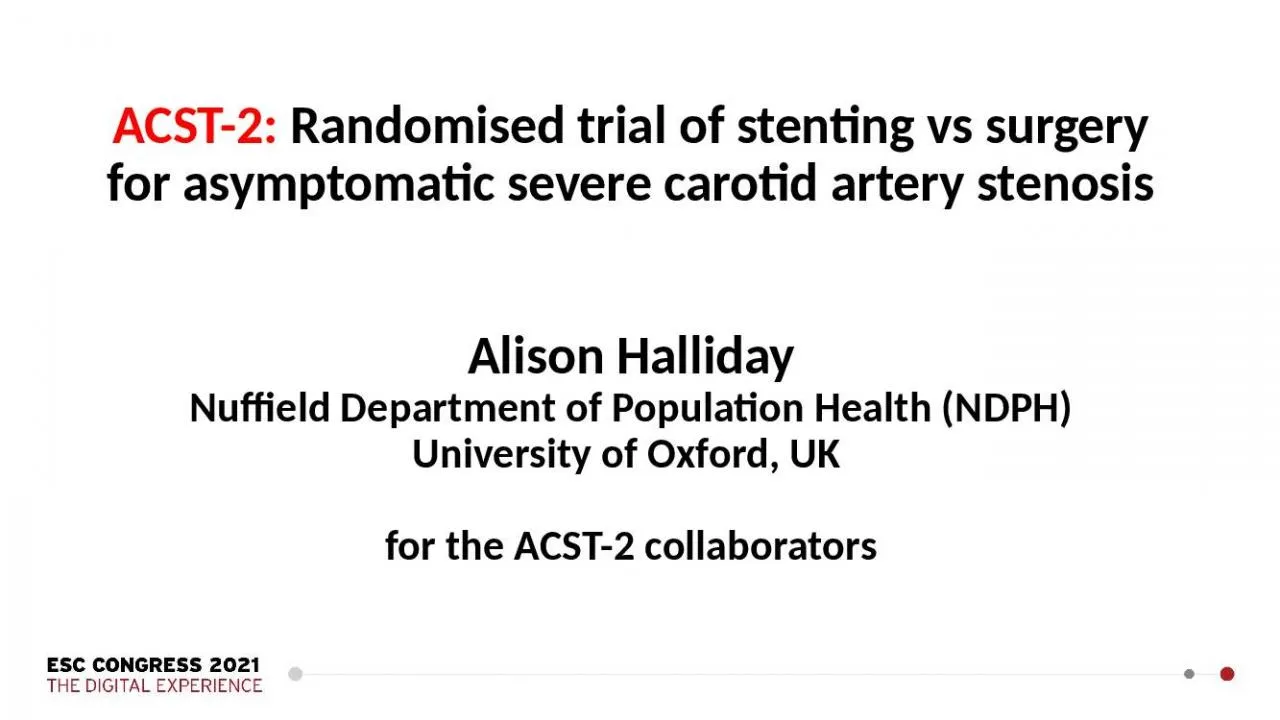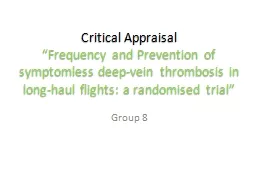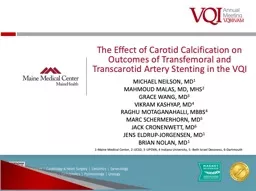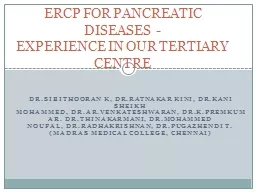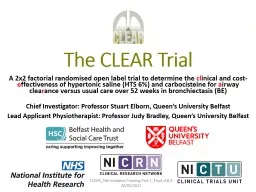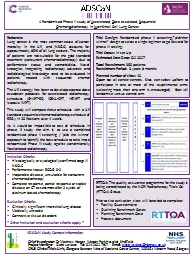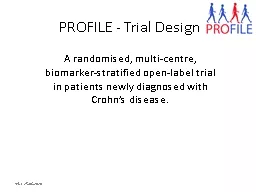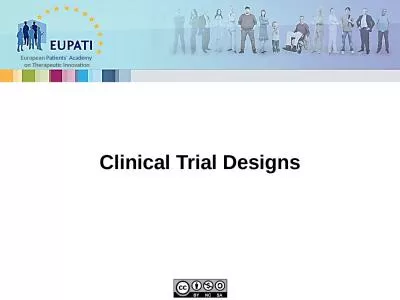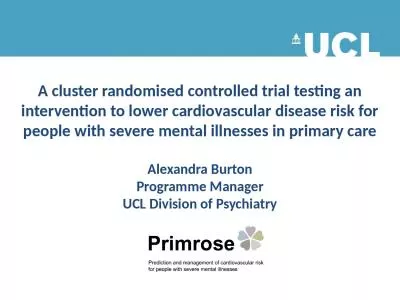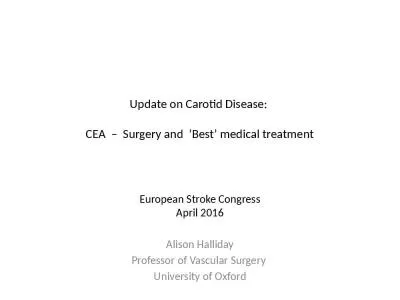PPT-ACST-2: Randomised trial of stenting vs surgery
Author : melanie | Published Date : 2022-02-15
for asymptomatic severe carotid artery stenosis Alison Halliday Nuffield Department of Population Health NDPH University of Oxford UK for the ACST2 collaborators
Presentation Embed Code
Download Presentation
Download Presentation The PPT/PDF document "ACST-2: Randomised trial of stenting vs..." is the property of its rightful owner. Permission is granted to download and print the materials on this website for personal, non-commercial use only, and to display it on your personal computer provided you do not modify the materials and that you retain all copyright notices contained in the materials. By downloading content from our website, you accept the terms of this agreement.
ACST-2: Randomised trial of stenting vs surgery: Transcript
Download Rules Of Document
"ACST-2: Randomised trial of stenting vs surgery"The content belongs to its owner. You may download and print it for personal use, without modification, and keep all copyright notices. By downloading, you agree to these terms.
Related Documents

